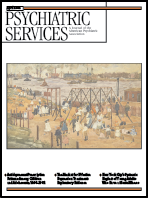Trends in the Use of Antidepressants in a National Sample of Commercially Insured Pediatric Patients, 1998 to 2002
Abstract
OBJECTIVE: The aim of this study was to estimate the prevalence of use of prescription antidepressants among children and adolescents by using nationwide data and to examine trends in use from 1998 to 2002. METHODS: Ambulatory prescription claims data for a nationwide random sample of more than 1.9 million life-years of commercially insured children (aged 18 years or younger) for the years 1998, 1999, 2000, 2001, and 2002 were examined retrospectively. The main outcome measure was trend in prevalence of antidepressant use. RESULTS: The overall prevalence of antidepressant use among children increased from 160 per 10,000 (1.6 percent) in 1998 to 240 per 10,000 (2.4 percent) in 2002, for an adjusted annual increase of 9.2 percent. The growth in the overall prevalence of antidepressant use was greater among girls (a 68 percent increase) than boys (a 34 percent increase). In 2002, antidepressant use was highest among girls aged 15 to 18 years, at 640 per 10,000 (6.4 percent). The trend of increasing overall use of antidepressants among children and adolescents appears to have been driven primarily by greater use of selective serotonin reuptake inhibitors. CONCLUSIONS: The growth in the prevalence of use of antidepressant medications among youths appears to be continuing, and the rate of increase between 1998 and 2002 is similar to the rate of increase seen in the period of the second-generation antidepressants (late 1980s to mid-1990s).



